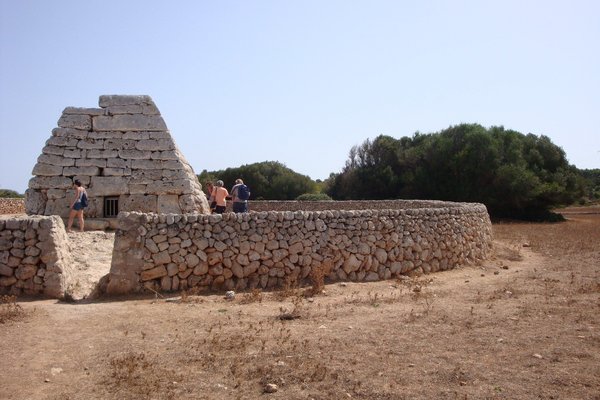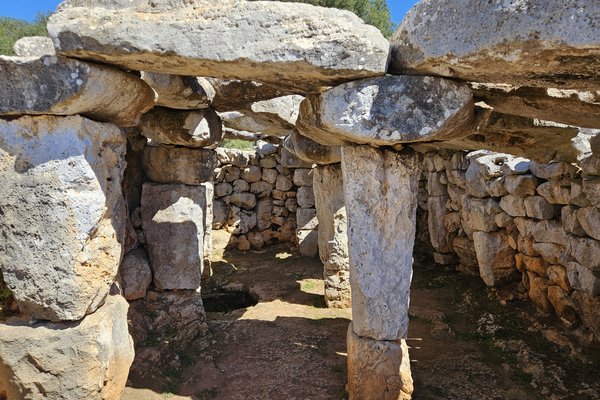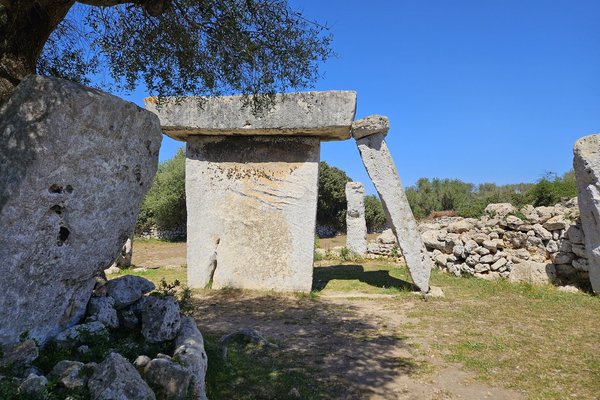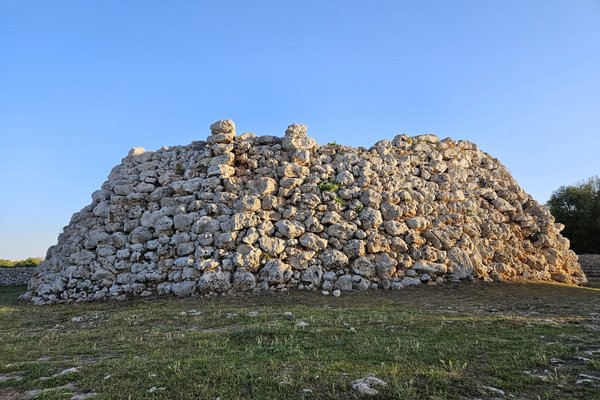Spain
Talayotic Menorca
Talayotic Menorca covers nine clusters of archaeological sites showing prehistoric dry stone building techniques.
The tombs, houses and ceremonial structures were made of large stone blocks without mortar. They date from the Bronze Age to the late Iron Age and are a product of a relatively isolated island culture. This building tradition ended when the Romans occupied the island.
Community Perspective: the locations are quite spread out across the island, so are best explored by rental car or e-bike. Randi and Svein rated 18 of the structures, declaring Talati de Dalt and Torralba d’en Salort (both have a bit of everything), Torre d’en Galmes (the largest complex and the best-preserved settlement), Naveta des Tudons and the Cala Morell necropolis the best.
Site Info
Official Information
- Full Name
- Talayotic Menorca (ID: 1528)
- Country
- Spain
- Status
-
Inscribed 2023
Site history
History of Talayotic Menorca
- 2024: Name change
- From "Prehistoric Sites of Talayotic Menorca" to be called just "Talayotic Menorca".
- 2023: Name change
- Upon inscription, at the suggestion of ICOMOS: from "Talayotic Menorca - A cyclopean island odyssey" to "Prehistoric Sites of Talayotic Menorca"
- 2023: Inscribed
- Inscribed
- 2017: Deferred
- Type
- Cultural
- Criteria
- iii
- iv
Links
- UNESCO
- whc.unesco.org
All Links
UNESCO.org
- whc.unesco.org — whc.unesco.org/
Community Information
- Community Category
- Archaeological site: Prehistoric
Travel Information
Recent Connections
-
Name changes
Upon inscription, at the suggestion of … -
Underwater Archaeology
South-east area - Alaior (Component C6)… -
Recently discovered
Es Pas cave (Component C3): "This cave,…
Connections of Talayotic Menorca
- Geography
-
-
Mediterranean shore
Southwest area (Component C2): "The settlements of Son Saura and La Cova are located toward the Es Prat de Son Saura wetland. This component connects the plains landscape to the sea." - Central-south area of ravines (Component C4): "The wetland Prat de Son Bou connects the pastures to the sea." – "In five component parts (C2, C4, C5, C6 and C9) the coastline defines sections of the boundaries." (AB Ev) – "(...) the nominated property includes coastal sections and an exceptional coastal necropolis of rock-hewn caves, and the adjacent marine area" (Nomination file, p. 46-47)
-
- Trivia
-
-
Cultural sites taking up an entire island
Illa d'en Colom (Nomination file, p. 160)
-
- History
-
-
Iron Age
"from the Bronze Age (1600 BCE) to the Late Iron Age (123 BCE)" (AB ev) -
Megalithism
"A talaiot is a Bronze Age megalith found on the islands of Menorca and Majorca" (wiki), the AB ev does not refer to them as megaliths but ". Also located in this component part (C5) is a well-preserved megalithic dolmen that predates the island’s cyclopean architecture" -
Sieges and Battles
Trepucó (Component C8): "It is in a good state of conservation despite its historical tendency for being affected by alterations like the star-shaped dry-stone-wall fortification built in the 18th century by Spanish troops that were laying siege to fortress of Saint Philip's Castle." "In 1782, a cannon of the battery utilised during the siege of the fortress of Saint Philip's Castle was installed atop the talayot, which must have affected its structure, as it was reinforced with the wall placed at its northeast side to avoid collapse." (Nomination file, p. 452, 464) -
Bronze Age
"from the Bronze Age (1600 BCE) to the Late Iron Age (123 BCE)" (AB ev) -
Historical Food Remains
"The cave sanctuary of Calescoves, known as the Cova dels Jurats or the Cova de l'Esglèsia, (...). In this sanctuary, rituals similar to those held in the taula enclosures took place: feasting, which left behind bone remains of the animals that were eaten, and the consumption of alcoholic beverages, especially wine." (Nomination file, p. 188) – "Archaeological evidence has shown that (...) all or a large part of food production was centralised in a large community building (...) A great number of charred cereals and bones of domestic animals, especially caprines, and oxen and pigs in much smaller proportions, were also found." (Nomination file, p. 236)
-
- Ecology
-
-
Lagoons
"coastal lagoons like S'Albufera des Grau (Component C9)" (Nomination file, p. 74) – Component C9: "The coastal strip hosts coastal habitats of extraordinary interest in terms of its flora and fauna, including (...) a system of coastal lagoons and wetlands." (Nomination file, p. 160)
-
- Architecture
-
-
Hypostyle
"The characteristic structures include (...) hypostyles (roofs supported by pillars)." (OUV) – "Another structure that can be documented inside the villages are the hypostyle halls, also known as covered enclosures. These buildings are comprised of a central line of stone columns (...). They are built up against the outside walls of the circular houses, but unlike these, they are roofed with stone slabs. Excavated examples of these suggest that their use is associated with storage and/or stabling livestock." (Nomination file, p. 109) – "hypostyle halls at settlements like Talatí de Dalt or Torre d'en Galmés" (Nomination file, p. 192) -
Dry Stone Construction
"illustrate the evolution of the island’s dry stone building practices" (AB ev) -
Spolia
Cornia Nou (Component C7): "In the recent past, stone was extracted for the construction of the Monument to Fallen Soldiers, located in Maó's Plaça de S'Esplanada square, after the Spanish Civil War." (Nomination file, p. 450) -
Rock Cut Architecture
"(...) right in the middle of the Talayotic period, (...) a new kind of hypogea emerged, dug into the top of coastal cliffs and the high canyon walls, forming large burial grounds. These are known as the Calascoves Type I hypogea. (...) At the end of the 9th century BC, we have documented a new kind of hypogeum excavated into the rock - Calascoves Hypogeum XXI. It is characterised by the fact that it has two larger, more spacious globular or kidney-shaped chambers, allowing people to move around comfortably inside. They sometimes have pilasters built against the walls, and in the case of hypogeum XXI, columns with central niches." (Nomination file, p. 119-120) -
Restored by anastylosis
"ICOMOS notes that some component parts have had their authenticity compromised by interventions such as (...) reconstruction using anastylosis (Component C1)." (AB Ev)
-
- World Heritage Process
-
-
Reconstruction regarded as unsatisfactory
"ICOMOS notes that some component parts have had their authenticity compromised by interventions such as the insertion of a concrete block (Component C8), insertion of a steel support (Component C4) and reconstruction using anastylosis (Component C1)." (AB Ev) -
Reduced from broader TWHS
In 2016, 25 archaeological sites were proposed and the nomination deferred. In 2023, with the successful nomination, 24 archaeological sites remained with Torre del Ram omitted. -
Cultural landscape not recognized
The site is referred to as a cultural landscape in the IUCN Evaluation. (IUCN Ev)
-
- Religion and Belief
-
-
Legends and Folk Myths
Component C6: "This component is highly representative of the power that has emanated from the cyclopean works of the ancestors to inspire myths and legends that have formed part of Menorcan intangible culture. A good example of this is the legend of the five giants that used to meet around the taula of Torralba d'en Salort, or the myth that considered the Na Patarrà well as one of the gateways to hell". (Nomination file, p. 151)
-
- Human Activity
-
-
Ongoing Archaeological digs
"There are fifteen ongoing archaeological excavations" (2023 AB Ev) – The Nomination file mentions ongoing (2023) archaeological research at Torre d'en Galmés and Cornia Nou. (Nomination file, p. 294) – There are several ongoing excavations cited on the website. -
Copper production
North-west area of Tramuntana (Component C9): It contains "Sa Mitja Lluna in Illa d'en Colom, a prehistoric copper mine". (AB Ev) – Component C9: "The prehistoric copper mine of Mitja Lluna on Illa d'en Colom is an exceptional site, not just because of its exceptional state of conservation, but also because it is currently the only prehistoric mine known in the Balearic Isles, and one of the few that have been conserved in the south of Europe." (Nomination file, p. 161-162) -
Irrigation and drainage
"Prehistoric settlements, water management systems, (...) illustrate the interaction between prehistoric communities that inhabited Menorca and their natural environment (...). - Alaior (Component C6): "(...) water engineering systems such as the well of Na Patarrà illustrate the complexity of the settlements' organisation." (AB Ev) – Component C1: "This component contains interesting vestiges of ancestral water engineering, including catchment systems, canals excavated into the rock and wells." (Nomination file, p. 133) – "Rainwater was channelled to these reservoirs by small channels dug ingeniously out of the rocky surface. Such channels can be observed, for example, at Torre d'en Galmés (Component C5), where they are used along with a series of smaller filtration tanks excavated from the rock to form a system of sediment decantation." (Nomination file, p. 196) -
Olive Tree Landscapes
"In eight of the nine component parts (C1-C7 and C9), the settings of the archaeological sites are included within their boundaries. These cover diverse landscapes of farming and grazing land, wild olive tree forests and other characteristic vegetation (holm oaks, pines) that relate to the traditional activities of the communities on the island in the past and today." – "Wild olive tree colonisation of the landscape is noticeable in several of the component parts." (AB Ev) -
Piracy
"Protective wall systems seem to be associated with the occupation of the island by pirates (...)" (AB Ev) – "The first walls were "passive" by nature, meaning that they were prepared to resist occasional assaults, probably attacks from pirates intending to loot and plunder the villages. They were built with enormous blocks comprising cyclopean walls reminiscent of the talayots themselves (...)." (Nomination file, p. 112) -
Shipwrecks
South-east area - Alaior (Component C6): "The underwater archaeological heritage is also noteworthy in this area. The boundaries of the component part include the marine area around the Calescoves anchorage. There are some important wrecks located in this marine area that hold significant material evidence illustrating trade and other relations maintained by the ancient settlers with the outside world." (Nomination file, p. 150) -
Stone Quarries
Son Mercer de Baix (Component C3): "In the settlement's vicinity, the quarry that supplied rock used for its construction remains in a good state of conservation. Its study and analysis have provided further knowledge regarding the system of exploitation implemented during prehistory, adding further value to the site." (Nomination file, p. 429) – Component C2: "There is also a quarry in the area, providing the stone slabs, as well as added information about the cyclopean techniques developed by prehistoric communities." -
Textiles
13 spindle whorls and 67 loom weights, all made of ceramic, were found in "a Late Talayotic dwelling at the Torre d'en Galmés settlement (Component C7), known as circle 7". "From this and other finds, we can conclude that spinning and weaving tasks are rather well documented in Menorca during the Late Talayotic period. However, the technology used for such processes during earlier periods remains unknown (...)." (Nomination file, p. 274-275)
-
- Constructions
-
-
Cemeteries
"The So Na Caçana site (...) Like many prehistoric settlements of the island, it was used until after Roman times, as can be seen from the fact that it also has a small Islamic cemetery." -
Tumuli
Torralba d'en Salort in Component C6: "(...) the underground or semi-underground structures like the hypostyle hall (which conserves part of the earthen tumulus that covers the roof)" (Nomination file, p. 443) – "The dolmen of Ses Roques Llises (...) includes a corridor delimited by stone slabs (only the left side slab still exists), a rectangular chamber accessed through a perforated stone slab and the remains of a tumulus (which likely covered the entire tomb) that enveloped the structure." -
Cultural sites connected to Cliffs
"right in the middle of the Talayotic period, (...) a new kind of hypogea emerged, dug into the top of coastal cliffs and the high canyon walls, forming large burial grounds. These are known as the Calascoves Type I hypogea." (Nomination file, p. 119) - Component C5: "The funeral spaces, hidden and removed from the settlements, are arranged around the ravine of Cala en Porter and especially on the coastal cliffs." (Nomination file, p. 145) -
Hypogea
"These characteristic cyclopean structures include hypogea" (AB ev) -
Necropolises
Component C5: "Cala en Porter, a ravine in the coast, showcases a large necropolis made of artificial caves." - Alaior (Component C6): "The Calescoves necropolis exhibits artificial caves used as funeral places from the Late Bronze Age to the Iron Age." (AB Ev) – "The cove known as Calescoves (...) hosts a unique artificial cave burial ground. This is the largest necropolis on the island, where over 90 burial caves have been identified (Component C6)." (Nomination file, p. 119) -
Tombs
Ses Roques Llises: Es una tumba colectiva construida en torno a los años 2100 y 1600 aC entre el final del Calcolítico y el inicio de la Edad del Bronce (Wiki). -
Cisterns
"As for cisterns, these have been documented inside houses and outside them. Many of them have a piriform cross-section, but others seem to have been repurposed from old burial hypogea from previous times". (Nomination file, p. 109) - Component C5: Torre d'en Galmes has "one of the best examples of the unique water culture associated with Talayotic settlements, with a range of different elements and artefacts, such as a sophisticated water catchment system, wells or decanting pools and cisterns dug out of the rock." (Nomination file, p. 145) – Cornia Nou "offers good examples of storage systems from different periods, including some spectacular cisterns." (Nomination file, p. 156)
-
- WHS on Other Lists
-
-
World Biosphere Reserves
Menorca (1993)See www.unesco.org
-
Cultural WHS set within an IUCN recognised protected area
S'Albufera des Grau – IUCN Category II (National Park) – Component C9 is situated in the National Park. -
Natura 2000
"A large part of the land of the nominated property (65% of its total surface area) (...) is part of the Natura 2000 Network (...)." (Nomination file, p. 506-507) -
UNESCO Intangible Cultural Heritage Lists
Art of dry stone construction, knowledge and techniques (2024) (Nomination file, p. 353-354)See ich.unesco.org
-
Located in a TCC Territory
Balearic Islands
-
- Timeline
-
-
Built in the 2nd Millennium BC
"illustrate the evolution of the island’s dry stone building practices for approximately 1,500 years, from the Bronze Age (1600 BCE) to the Late Iron Age (123 BCE)."
-
- Science and Technology
-
-
Archaeological potential
"It should be noted that a significant part of the sites in the area of the nominated property remain totally or partially unexcavated. The undisturbed locations of these still abundant archaeological deposits provide enormous opportunities for future research and a greater understanding of the values of the nominated property." (Nomination file, p. 316) -
Underwater Archaeology
South-east area - Alaior (Component C6): "The underwater archaeological heritage is also noteworthy in this area. The boundaries of the component part include the marine area around the Calescoves anchorage. There are some important wrecks located in this marine area that hold significant material evidence illustrating trade and other relations maintained by the ancient settlers with the outside world." (Nomination file, p. 150) -
Recently discovered
Es Pas cave (Component C3): "This cave, used for collective burial, was discovered virtually intact in 2005. (...) The excellent state of conservation of the vestiges of the Es Pas has helped reveal Bronze Age burial rites through the remains of approximately 70 individuals, a highly relevant contribution to the understanding of the community's post-mortem treatments (shrouding, positioning of the corpse, associated vegetal elements like oils, dyes or floral offerings), paleopathologies and other aspects of the community that existed between the 12th and 9th centuries BC." (Nomination file, p. 429-430) - Biniedrís cave (Component C6): "a quite well-conserved funerary cave that was discovered in 2015, revealing approximately 100 bodies that had been interred with funerary rites like the dying of hair of the deceased." (Nomination file, p. 445) -
Early Archaeology
"Exploration of the necropolis at Calescoves by various archaeologists began in the 19th century" (Nomination file, p. 291) -
Astronomy and Astrology
"Distinct visual interconnections between archaeological sites indicate the existence of social networks, and astronomical orientations imply possible cosmological meanings." (OUV) – "Torre d'en Galmés (...) illustrates the relationship between the landscape and the skyscape where archaeo-astronomical studies have suggested the visual interrelationships between taulas hold symbolic meanings." (AB Ev)
-
- WHS Names
-
-
Name changes
Upon inscription, at the suggestion of ICOMOS: from "Talayotic Menorca - A cyclopean island odyssey" to "Prehistoric Sites of Talayotic Menorca". A year later to be called just "Talayotic Menorca".
-
News
No news.
Recent Visitors
Visitors of Talayotic Menorca
- Adam Hancock
- Alexander Lehmann
- Ana Lozano
- Atila Ege
- Bin
- campmany
- Christravelblog
- Clyde
- Corinne Vail
- Csaba Nováczky
- Daniel Chazad
- Dimitar Krastev
- Dwight Zehuan Xiao
- Els Slots
- Erik Jelinek
- Evgenii
- Femke Roos
- George Gdanski
- Jesse S 2010
- Jonas Kremer
- Klaus Freisinger
- krtek
- Luboang
- Luis Filipe Gaspar
- Maciej Gil
- Martina Rúčková
- Michael Turtle
- Mikko
- MMM
- Msarmiento1979
- Nihal Ege
- Paola Laura
- Patrik
- Philipp Peterer
- Rahelka
- Randi Thomsen
- Roel Sterken
- Roger Ourset
- Roman Bruehwiler
- Rudegirl
- Stanislaw Warwas
- Svein Elias
- Tarquinio_Superbo
- Thomas Buechler
- Timothy C Easton
- triath
- Vanessa Buechler
- voyager
- Walter
- Westwards
- Wojciech Fedoruk
- Yongcheng Liu
- Zoë Sheng
Community Reviews
Show full reviews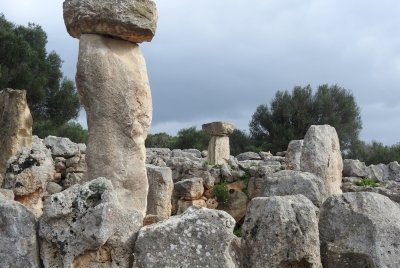
Talayotic Minorca is Spain's submission for 2022. The revised documents are now available from the excellent nomination website. They’ve even added an Epic Subtitle: “Talayotic Menorca - A cyclopean island odyssey”. The 25 locations have been decreased to 9, but that’s just a cosmetic adjustment as the former locations are now bundled into clusters. Only the Torre del Ram near Ciutadella has not survived the cut. As far as I can see all suggestions made by ICOMOS during the Deferral of 2017 have been incorporated. All but one that is: the Necropolis at Son Real on the neighboring island of Mallorca has not been included. The Minorcans seem to want a WHS all for themselves! The process has cost 1 million EUR already.
None of the sites lie particularly convenient to be explored by public transport. The best ones for that would be Trepuco (cluster 8), about 3km from the nearest bus stop in Mahon, and Torralba d’en Salort (cluster 6) which lies about 4km from Alaior. One could also take a taxi to one of the sites and then walk back. Menorcaarqueologica does offer guided hiking along some of the sites with an archeologist. In the end, I choose to rent an e-bike for the day from bikemenorca. The distances between the sites in the southeast of Minorca are perfectly suitable for cycling.
My visit didn’t get off to a good start: I sped past the turnoff to Talati D’Alt (not signposted from the ME12). …
Keep reading 0 comments
We spent two short days in Minorca in October 2021 to check out the upcoming nomination to the list for next year. Presently there are 25 locations enlisted, but the selection of sites is likely to be and should be reduced.
The first 4-6 visits were nice, they added something different, but then it was too much of the same. Some of the sites are neglected and need to be maintained. It seems that the best sites were those with an admission. So which one will survive? Here is our bet after visiting 18 sites.
The best sites overall:
Talati de Dalt: 4€ admission, well organized. Has a bit of everything. Special to the site is a taula which is a little bit different from the others and there are covered enclosures
Torralba d’en Salort: 4€ admission, well organized. Has a bit of everything with a great taula and a hypostyle chamber.
Torre d’en Galmes: 3€ admission , Mondays free, well organized. The largest complex and the best-preserved settlement. It is particularly noted for its cercles or post-taylotic houses.
Naveta sites. We visited two.
Naveta des Tudons: €2 admission, a well preserved naveta, considered as the most iconic landmark.
We also visited Rafael Ruby which has two burial navetas. Not very organized right now, but it seems to be stepping up with several new information panels and maybe a ticket booth. It was closed, but we sneaked in. Here you …
Keep reading 0 comments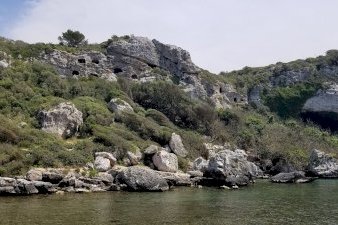
Minorca/Menorca is riddled with sites to enjoy the Talayotic culture. There is even one AT the airport road so you could basically fly in, walk 10 minutes or less and "tick" this off. I actually did not check this one out because I had a car and was recommended a lot better things from the lady at the car rental. It is also a massive change in tourist numbers from the nearby islands, so calm and relaxed.
I drove to 3 places. Two "rubble", not that interesting, and tough to park, free of entry like most sites on the islands (if not all?). It really only takes a few minutes to walk around these and the grass wasn't cut so not much fun. The third place, much more interesting, was the Cales Coves Necropolis. You can park and walk down with some shades paths and mostly flat, enjoy a sit at the playa, see some of the necropolis on the way and in the bay. Yes, they are just caves now and you cannot even go up there but it gives you an idea that the culture was present everywhere on this island. The area was an anchorage for trading boats and then re-used in Roman times as a sanctuary. A couple had brought their kayak and I was a bit jealous they can go out into the blue sea on this chilled out, underrated island.
In retrospective I should have sought out a museum to complement …
Keep reading 0 comments
The Talaiotic Culture is an ancient society established on the Balearic Island between the Iron Age and its replacement by the Punic and the Roman cultures. Menorca Island has many stone remains of that culture, of which 25 are to be considered to be nominated as WHS.
I used to have family vacation on Menorca, the least developed and most natural island on the Balearic Islands. Vacation on Menorca is rather laid-back. Development on Menorca was slow, and unlike Ibiza and Mallorca, huge concrete hotels and vacation town are absent. Beaches are very nice, with clear blue water, often enclosed between trees-covered cliffs on both sides.
The talaiotic remains are spread out all over the island, and you cannot miss them (least of all one just after exiting the airport coumpound). It would take some time to cover all of the 25 sites. Public transport is efficient, but renting a car is cheap and would save a lot of time. I would recommend to at least see the two most emblematic sites, which are Es Tudons and Talati de Dalt.
Getting to visit those archeological sites, you quickly have to get used to some vocabulary:
-"navetas", which are pyramide-like funeral buildings, only found on Menorca. The name naveta come from the catalan word for boat, as those structures often look like upside-down boats.
-"taula" which are ceremonial vertical monoliths which is topped by an horizontal stone (forming a T or a table). The name taula comes from catalan word for …
Keep reading 0 comments
